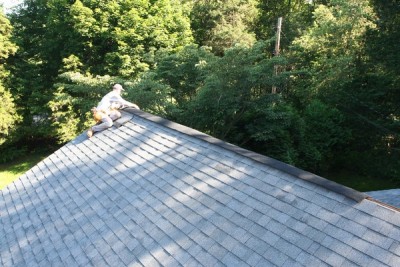Ridge vents - the importance of thinking things through
July 13, 2021 | heritagestanding.com
I’m often bothered when I get the impression someone didn’t think through the implications of their construction choices. There are benefits and harms to almost every decision, and understanding those is important. Unfortunately, this doesn’t just extend to building conservation work. Allow me to digress on one specific problem that comes up more often than it should.
Many people in the construction industry are familiar with the ridge vents that you can get for asphalt or fiberglass roof singles. The vent bends over the ridge or top line of a home’s roof. This is typical for homes, occasionally for other buildings. Those that like them, love them. They are marketed as a great solution for everything. The let the air out, they fit nicely, they are easy to install.
The problem is, they don’t work in many parts of Canada. A few quick things to understand:
- These ridge vents can only be bent so far, therefore they should not be used on really steep roofs. And those roofs that they are used on are asphalt or fiberglass singles (so not slippery). The purpose of the ridge bent is to help air circulate through the attic space.
- In the summer it lets hot air out of the attic to keep from having extreme heat in the attic, and in winter it allows hot air out of the attic so that the roof deck stays colder and ice damning is avoided. This system also needs vents in the system lower down to let air in.
- In most of Canada our winter comes with a large amount of snow.
Have you ever seen a roof covered with snow? At least in those cities I’ve spent an entire winter in or around, the roof, and the ridge of the roof, get covered. How could they possibly allow air movement when they are covered by a pile of snow?
Does this mean all ridge venting doesn’t work? No. Design must look at both the big things and the small things. For the small things, like venting an attic, the details matter. I can look out my window at a copper roof that has a metal ridge vent – that is fine, because the roof is steep enough and slippery enough that snow never covers the roof – but another building I see in front of it has an asphalt single roof with ridge vent that is completely covered for most of winter. These are a great solution for southern climates, and they can even have a role in how a system works in our climate, but they are being used in ways that can cause problems.
In the end, this musing of mine is more related to my personal concern that we are creating a construction industry that takes less responsibility for our action and puts less thought to our decisions. Too many otherwise good people will tell me how great a product is without thinking about what the product does. We need to think about how these things work – not just follow blindly what the other guy is doing. The photo shows a vent that may or may not work, depending on the climate (photo credit Brain Robinson, used under license CC BY 2.0).
Fortunately, there are many who do great work – but ask questions, and expect whomever you are dealing with on a project to know enough that they can find solutions.
Dr. Tom Morrison, P.Eng., Ph.D., CAHP, APT-RP, ISCARSAH
Heritage Standing Inc.
tmorrison@heritagestanding.ca
office: 506 459 3203
direct: 506 292 6348
heritagestanding.ca






